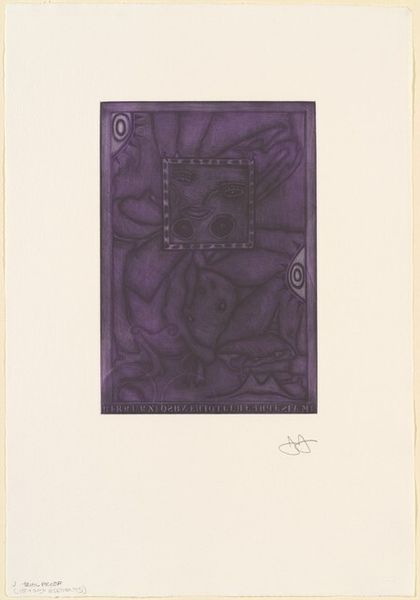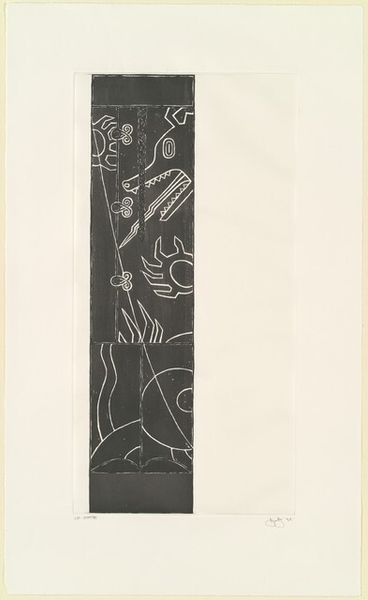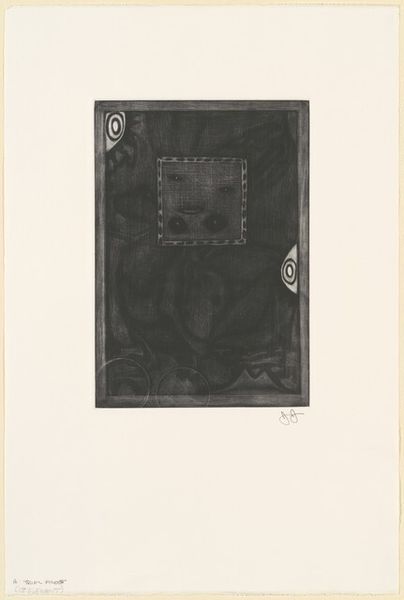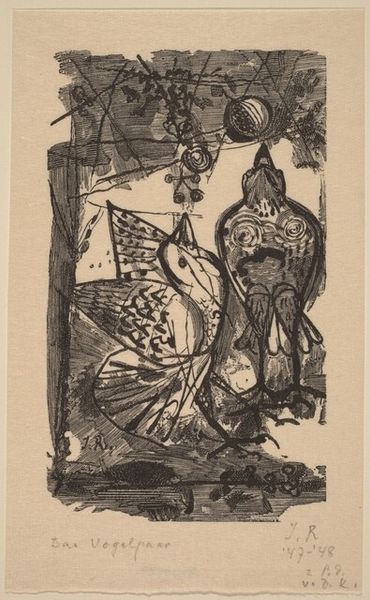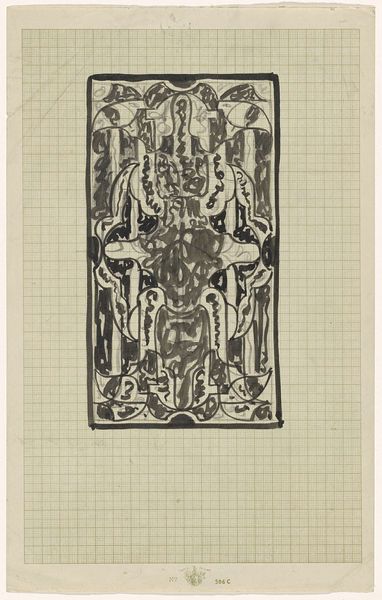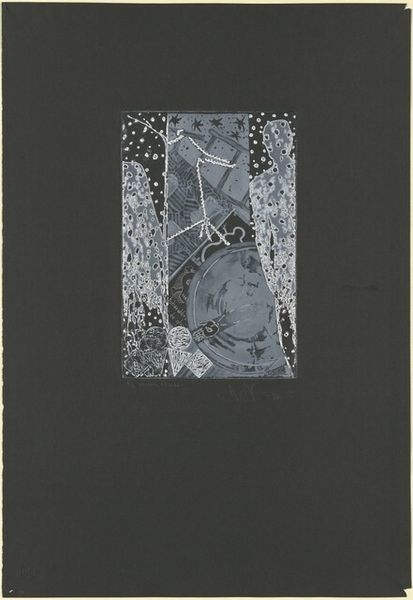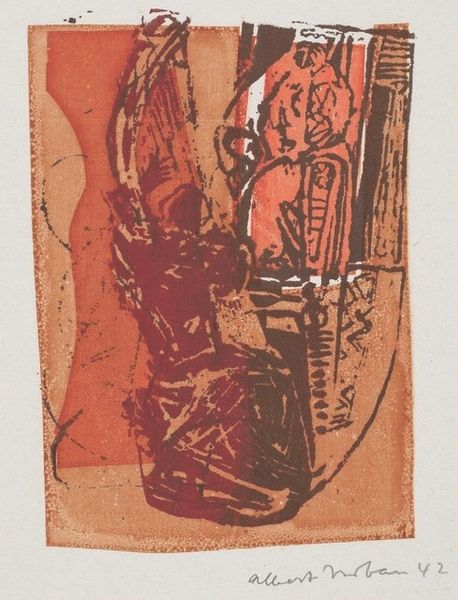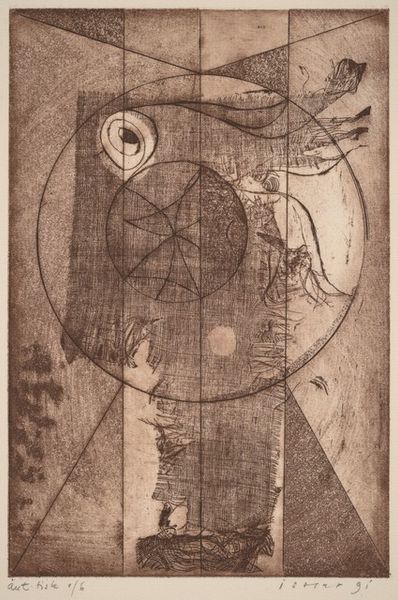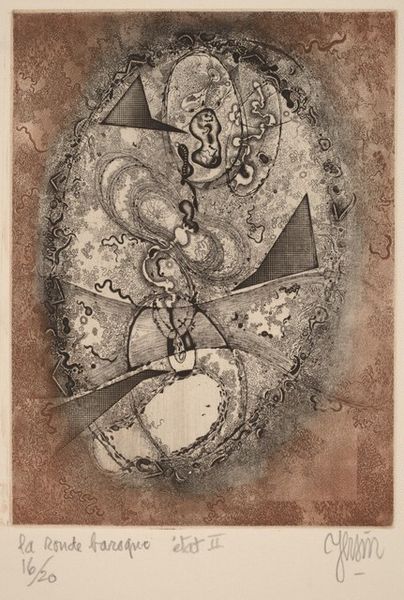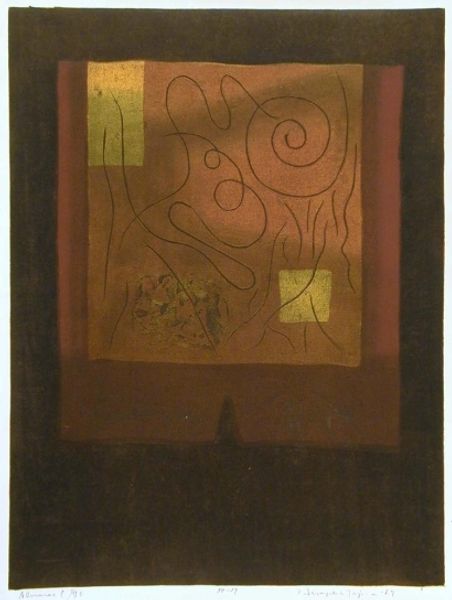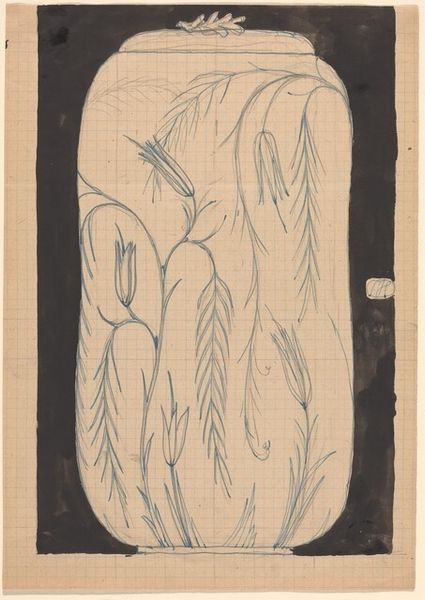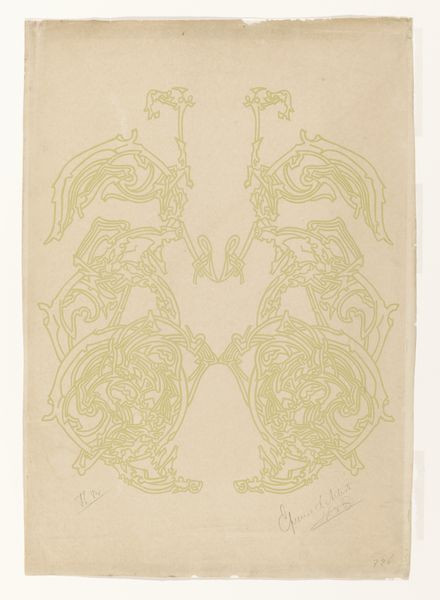![Untitled (Purple Mezzotint) [trial proof M] by Jasper Johns](/_next/image?url=https%3A%2F%2Fd2w8kbdekdi1gv.cloudfront.net%2FeyJidWNrZXQiOiAiYXJ0ZXJhLWltYWdlcy1idWNrZXQiLCAia2V5IjogImFydHdvcmtzLzI3NmIzNjEyLWY0YjgtNGNhNC1hM2FkLTk4MzFkOGU4ZjQ1OS8yNzZiMzYxMi1mNGI4LTRjYTQtYTNhZC05ODMxZDhlOGY0NTlfZnVsbC5qcGciLCAiZWRpdHMiOiB7InJlc2l6ZSI6IHsid2lkdGgiOiAxOTIwLCAiaGVpZ2h0IjogMTkyMCwgImZpdCI6ICJpbnNpZGUifX19&w=828&q=75)
#
neo-dada
Dimensions: plate: 28.89 x 20.32 cm (11 3/8 x 8 in.) sheet: 46.04 x 28.89 cm (18 1/8 x 11 3/8 in.)
Copyright: National Gallery of Art: CC0 1.0
Curator: Jasper Johns' "Untitled (Purple Mezzotint) [trial proof M]" from 1995. It’s a fascinating piece. The mezzotint process allows for such rich textures, doesn’t it? Editor: Yes, that's definitely my first impression—the texture is captivating. It has a brooding, almost melancholic feel to it. What exactly *is* mezzotint? Curator: Mezzotint is an intaglio printmaking process. The artist roughens the plate all over with a tool called a rocker to create uniform burrs that, if printed at this stage, would print as solid black. The artist then smooths out parts of the plate to create the lighter tones. It’s an incredibly labor-intensive and skilled process. Johns really explores this haptic dimension. Editor: Given its textures, I'm particularly struck by its capacity to invoke fragmented memories and the passage of time. In light of the imagery here—the cryptic texts and the shadowy figures that verge on abstraction—I read a deliberate blurring of boundaries. Curator: Precisely. Johns' practice often incorporates these fragments of text and found imagery, challenging the traditional separation between fine art and the everyday. These images might speak to both commercial mass culture and individual artistic intention. What are we consuming, how is it manufactured, and what meaning is conveyed via that product, for those participating in that economic arrangement? Editor: And don't those manufacturing practices, including those related to art, speak to issues of labor, gendered history and classed hierarchies of artistic traditions? This, for me, gestures to the broader intersectional dialogues within which Johns's practice engages. He isn't simply making “pretty” pictures, is he? He invites questions about production, representation, and subjectivity. Curator: Definitely not just “pretty.” And what Johns achieves through that incredibly intensive and demanding printing technique—and it really is manual labour–lends the work a striking emotional complexity and nuance. Editor: Absolutely. Thinking about gender roles specifically, the piece makes me question how definitions are historically gendered, for example: what qualifies an occupation for higher art status in relation to historically overlooked skills such as textiles and sewing. Curator: A fruitful area of interrogation to be sure. Well, I hope we have inspired others to explore Jasper Johns’ technical accomplishments and rich artistic reflections. Editor: Yes, consider this a conversation starter, not an endpoint! There's much to discover in its texture, materiality, and politics.
Comments
No comments
Be the first to comment and join the conversation on the ultimate creative platform.
